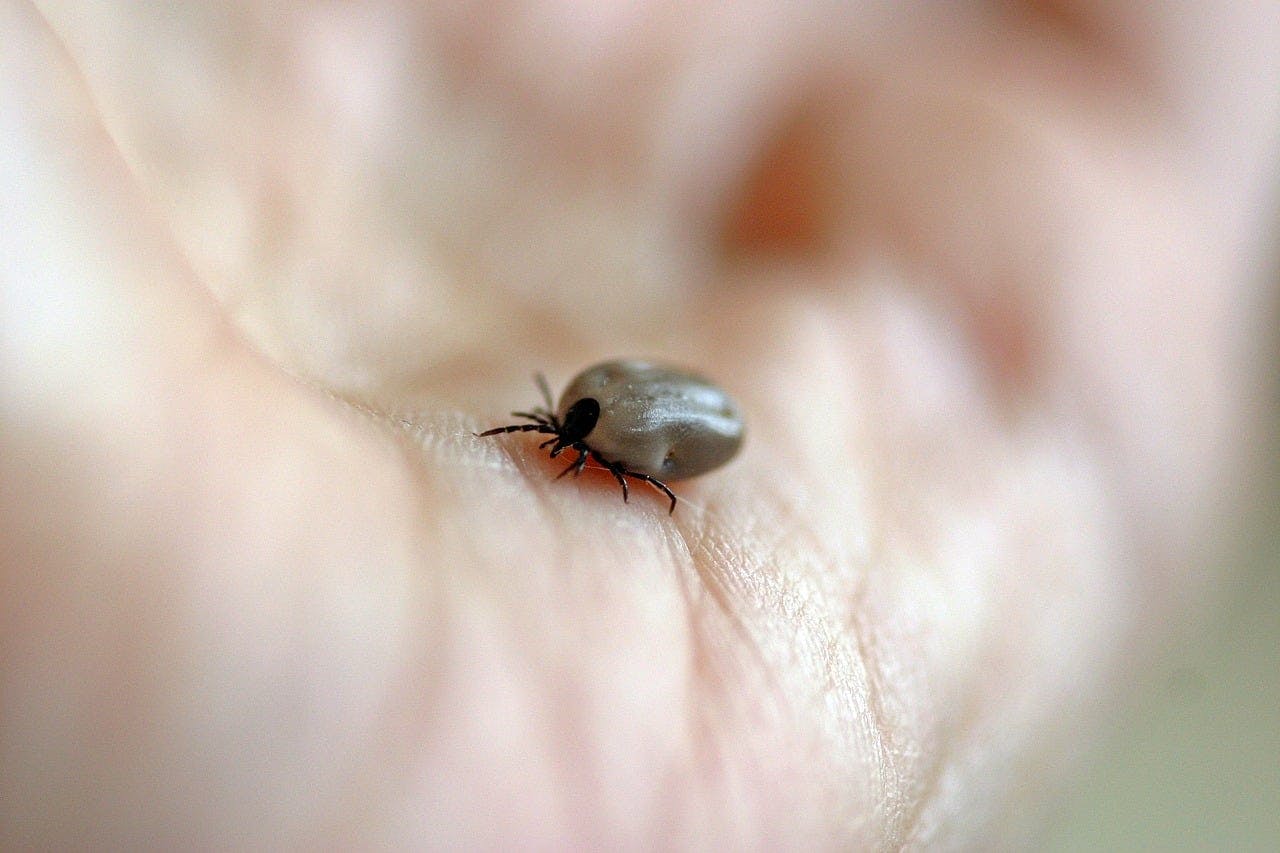Ticks are small, arachnid insects commonly found outdoors in grassy, bushy or wooded areas, or on animals. They can be harmful to humans because ticks carry bacteria, viruses and parasites that can lead to serious illnesses. Here is some basic info about the types of ticks you may encounter and how to combat them both outdoors and when you return home.
Types of Ticks
- Deer tick: Scientifically named Ixodes scapularis, the deer tick is mainly found in the eastern and upper Midwest regions of the United States. A bite from a deer tick can lead to conditions like Lyme disease and babesiosis.
- Dog tick: Also known as dermacentor variabilis, this tick is found in the eastern half of the US. It leads to diseases like Rocky Mountain spotted fever and tularemia. Dog ticks have been reported as far west as California.
- Lone star tick: Called Ambylomma americanum, lone star ticks live in the Northwest and Midwest regions of the United States and can carry diseases like ehrlichiosis and southern tick-associated rash illness.
Prevention: Before Going Outdoors
There are several steps you can take to prevent tick bites before you head outdoors:
- Know where to expect them—you can usually find ticks in grassy, brushy or wooded areas or on animals.
- Treat clothing and gear with products containing permethrin, which can be used for many types of gear and continues protection through several washings.
- Use EPA-registered insect repellants containing one of the following chemicals: DEET, picaridin, IR3535, Oil of Lemon Eucalyptus or 2-undecanone. Use this search tool to find the right repellant. Always follow instructions, never use repellant on babies under two months old, and don’t use OLE or para-menthane-diol products on children under 3.
Prevention: Ticks in the Yard
You can prevent ticks in your yard with:
- Landscape modifications: Create tick-safe zones in your yard to prevent common blacklegged ticks. Regularly remove leaf litter and clear tall grasses and brush near your home. Place wood chips or gravel between the lawn and any wooded areas to keep ticks away. Keep play areas and playground equipment away from shrubs, bushes and other vegetation.
- Chemical control: There are several tick control chemicals available, and these can be applied by you as a homeowner or by hired professionals. A single application of acaricide in the spring can reduce Lyme disease-causing ticks by between 68 and 100 percent.
- Discourage deer: Deer can carry blacklegged ticks, so removing plants that attract them and constructing barriers to keep them out of your yard can be helpful.
Prevention: After Coming Indoors
After camping, hiking or any other outdoor activity, it’s important to check for ticks. Follow these steps to ensure you catch them:
- Check your clothing: Ticks can stick to clothing and must be removed. Tumble dry clothes on high heat for 10 minutes to kill ticks—more time might be necessary if clothes are damp. Wash with hot water if clothing needs to be washed first, as colder water will not kill ticks.
- Shower: Showering within two hours has been shown to reduce risk of Lyme disease, and can help wash off unattached ticks.
- Check your body: Check under your arms, in and around your ears, inside your belly button, behind your knees, in and around hair, between the legs and around your waist for ticks.
If You Find An Attached Tick
Remove the tick right away by grabbing it with tweezers as close to the skin as you can, then pulling it right out. In the following days, look for signs of illness like rash or fever—if these develop, see your doctor. Your risk of tick-borne illness depends on where you live, the type of tick and how long it was attached.
Our providers take time to listen and communicate clearly with each patient, and our professional and courteous staff provides quality, personalized care for all of our patients’ general health and medical needs. We specialize in weight control, depression management, skin care, hormone replacement, cardiac conditions and cholesterol management. We strive to provide our patients and their families with quality healthcare services and respect their right to participate in all treatment decisions.
Sources:
“Stop Ticks.” Centers for Disease Control and Prevention. https://www.cdc.gov/features/stopticks/index.html
“Understanding and Preventing Tick Bites.” MedlinePlus. https://medlineplus.gov/magazine/issues/spring17/articles/spring17pg25-27.html







